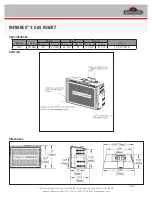
Cylinder sensor with IO-Link
MK59xx
25
The internal temperature may be higher than the actual temperature due to self-heating of the
processor.
Due to the installation in the cylinder groove, the temperature of the device is strongly coupled to the
temperature of the cylinder housing. If the cylinder becomes excessively warm due to wear or
overload, this trend can be detected with the device.
u
Select [Diagnosis] > [Temperature].
u
Select [Internal temperature] and read value.
9.9 Parameter setting examples
9.9.1 Detecting two end positions (short-stroke cylinder)
If the stroke of a short-stroke cylinder does not exceed the measuring range of the device, two end
positions can be displayed with one device.
The device detects both end positions of the short-stroke cylinder. The switching signal channels show
the following:
•
SSC1.1 indicates that the cylinder is in end position 1.
•
SSC1.2 indicates that the cylinder is in end position 2.
.
LED1
LED2
2
1
PDV: 3000
PDV: 500
Fig. 12: Detecting two end positions
1: Cylinder in end position 1 (piston in): LED1 is on. SSC1.1 is active.
2: Cylinder in end position 2 (piston out): LED2 is on. SSC1.2 is active.
Parameter setting example “manual switch point configuration” (2x single point mode):
2900
2800
3000
0
H
4000
SSC1.2
SSC1.1
SP1
600
500
700
SP1
H
T
T
high active
low active
2
1
T:
tolerance
H:
hysteresis
u
Installing and connecting the device.
u
Retract the cylinder to end position 1, read the current process data value (PDV) and note it down (3000 in the example).
u
Select [SSC1.1 Config. Mode] and set [Single point].
u
Calculate and set the switch point SP1 for switching signal channel SSC1.1:
[SSC1.1 Param. SP1] = 3000 (PDV) - 100 (tolerance) - 100 (hysteresis) = 2800
u
Select [SSC1.1 Config. Logic] and set [Low active].
u
Save the parameter set and write it to the device.









































